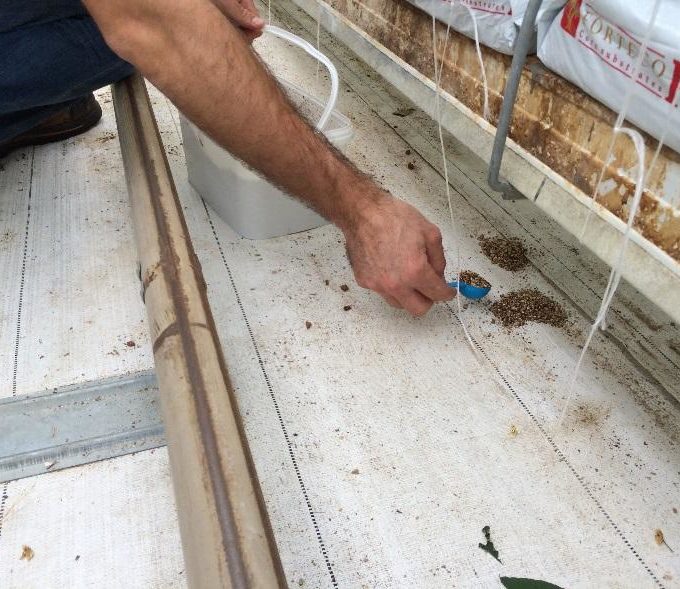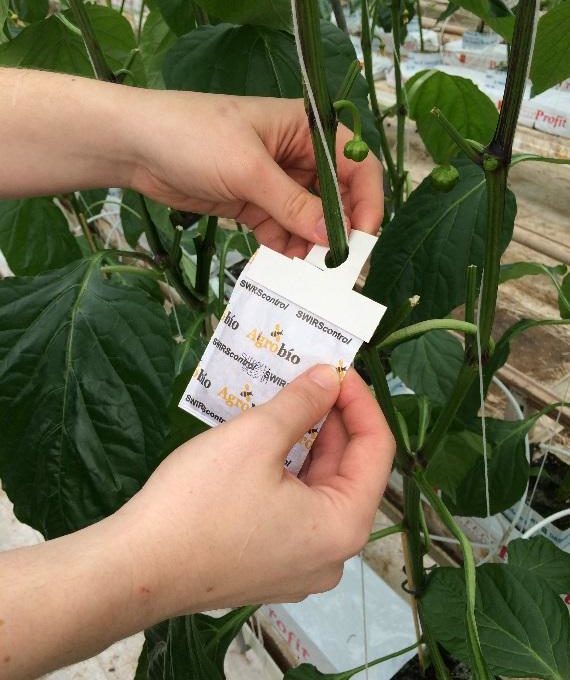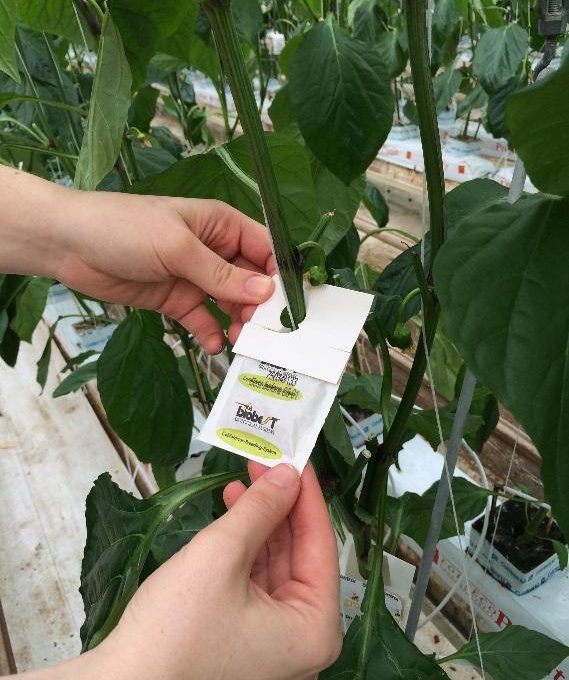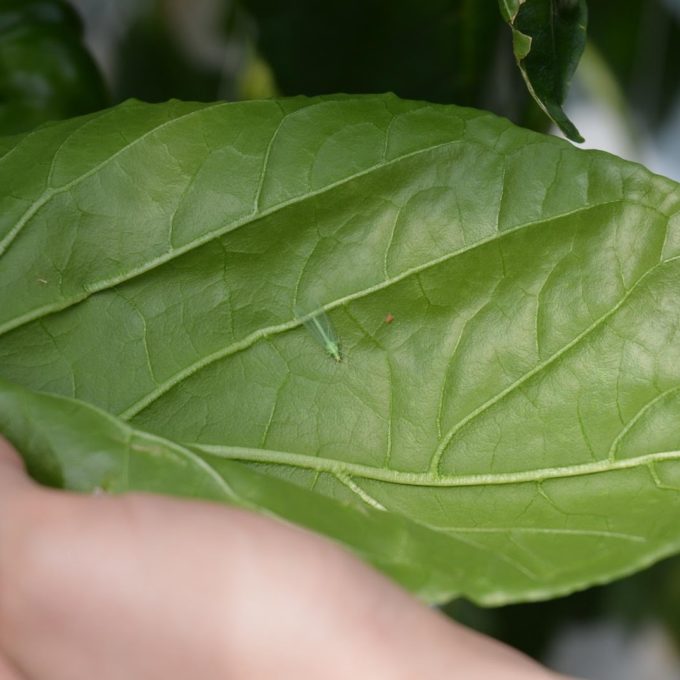Bugs, critters, pests, call them what you will, the scourge of farmers and gardeners around the world. I like bugs. Why would anyone like bugs? I will tell you why, starting with my employment. My name is Cameron Lyons and I am the Captain of the “Bug Brigade” here at NatureFresh™ Farms.
1.5 million plants growing in 140 acres of high-tech greenhouses presents us a big challenge to protect from the wrath of plant feeding, fruit damaging, stress inducing little buggers. Not to worry though, we have Mother Nature on our side. Beneficial insects, also known as bio-control agents or natural enemies, are very effective at helping us to combat the onslaught of plant feeding insects.
Starting from the day of planting, we regularly introduce natural enemies to help prevent and control our most common pest threats. The species of good bugs we use are all found in our natural environment in North America, and are common predators and parasites that you can find in your own gardens or local natural spaces if you look hard enough. Try leaving the pesticides in the cabinet for a season and watch them come. Plants, like all living things, have defense mechanisms in place to ensure their survival and complete their development cycle. When under attack from the enemy, plants send signals into the environment that will beckon the appropriate species of natural enemies to help ward off the threat. This doesn’t necessarily mean the aphids on your prize zucchini will disappear within days of attack, but watch what happens when nature takes its course without the interference of that bottle of poison you may have relied on for years. Lacewings, ladybeetles, aphidius colemani, aphidoletes aphidimyza, to name a few, will start arriving and reproducing in front of your eyes to save the day.
Growing healthy plants and having patience pays dividends in the garden as it does at NatureFresh™ Farms. Next time you see a spider don’t be afraid, just keep in mind they are controlling your houseflies and moths!

Spencer is scooping atheta coriaria, a ground beetle, onto the floor to help control thrips pupae, fungus gnat, and shorefly.


These sachets will slowly release amblyseius swirskii (left), and amblyseius californicus (right) into the pepper crop. Together, they will help control whitefly, thrips, and spider mites.

This adult lacewing has sniffed out an aphid colony, perfect spot for her to lay her eggs. When they hatch, the young larvae will need to eat a lot of aphids, spider mites, and thrips to develop into adults.



